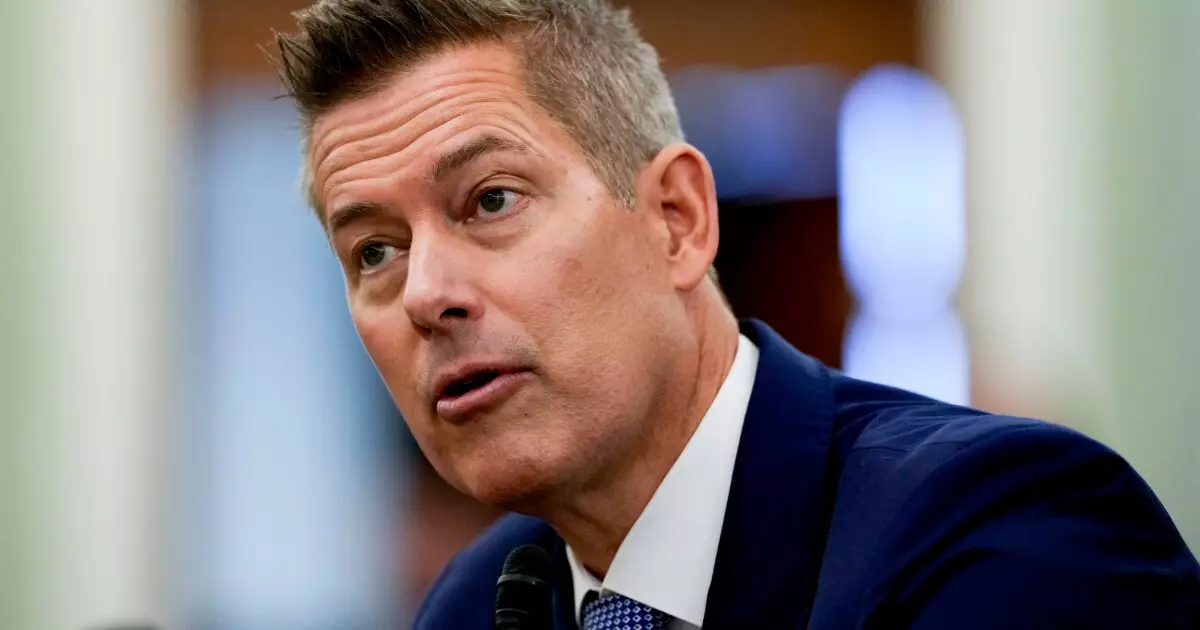In a bold move, President Trump has unveiled a budget proposal that suggests $163 billion in spending cuts for the upcoming fiscal year. This decision has sparked intense discussions across multiple sectors, especially in aviation. While the transportation sector has long been recognized as the backbone of our economy, the proposed cuts could jeopardize crucial infrastructure modernization efforts. Particularly, the House Transportation and Infrastructure Committee’s plan to allocate $12.5 billion for air traffic control upgrades stands as a beacon amidst this budgetary gloom. Shockingly, a staggering one-quarter of our Federal Aviation Administration (FAA) facilities are half a century old, thereby emphasizing an urgent need for investment.
The proposed modernization is not merely about technological upgrades; it is a lifeline for the safety and efficiency of air travel in America. The “Modern Skies Coalition” — a collective of stakeholders from pilots to airport authorities — has given the proposal its unreserved backing. Their endorsement highlights a critical truth; without investment, the U.S. risks losing its golden standard of aviation safety and efficiency. This sentiment resonates with me deeply. The aviation sector is an emblem of American ingenuity and resilience, and its decline due to budgetary constraints feels unacceptable.
The Risk of Short-Sighted Cuts
Among the more troubling elements of Trumps’ proposal is the intention to rescind unobligated funds from the FAA’s Alternative Fuel and Low-Emission Aviation Technology Program left over from the Biden administration. This move is portrayed as a path to streamline FAA’s focus solely on safety; however, the question arises—what is safety without sustainability? The aviation industry must embrace eco-friendly technologies, lest we find ourselves further behind other global players who are rapidly embracing green innovations.
Reducing funding for sustainable initiatives exemplifies a shortsighted approach to budgeting. The DOT’s recent updates to the Airport Improvement Program, which received an increase of $4 billion, are substantial but insufficient; the crisis of climate change cannot be handled with a few well-placed dollars. It’s vital that we understand that sustainable aviation fuels and efficiency measures are not peripheral to aviation safety but are fundamentally entwined with it.
Staffing Woes: A Crisis in the Skies
Flight safety is inextricably linked to having adequately staffed air traffic control centers. Currently, the FAA employs approximately 13,800 controllers, a number that is 3,000 short of what’s necessary for optimal functioning. The increasing frequency of near-misses and accidents is troubling—like the devastating January collision between an Army helicopter and a commuter plane at Washington’s Ronald Reagan National Airport. The stakes for passenger safety are too high for us to ignore, and although Secretary Sean P. Duffy claims to have made progress, one can’t help but see this as a mere band-aid for a gaping wound.
The combination of incentives aimed at retaining experienced controllers and hiring new recruits is promising. Streamlining the hiring processes from eight steps to five is a welcome reform that could indeed restore our ranks more quickly. Still, the fact remains that over-dependence on temporary strategies may ultimately worsen the core issues—the aviation sector needs a sustained commitment, both in funding and in workforce treatment.
A Call for Real Solutions
The aviation industry is also grappling with antiquated regulations, such as the $4.50 Passenger Facility Charge, which hasn’t been updated since 2000. This funding has been crucial for constructing vital infrastructure like runways and terminals, yet falling behind on simple economic adjustments reflects a failure to adapt to the changing realities of air travel. The need for updating this charge cannot be overstated; the infrastructure cannot thrive on yesterday’s revenue models.
The insistent push from industry groups for airport infrastructure investment cannot be taken lightly. They understand what’s at stake better than most: a thriving aviation ecosystem not only serves commerce but enriches cultural exchange and maintains national security. By neglecting it, we risk stifling innovation and ensuring our response to impending challenges is always reactive rather than proactive.
As the political landscape continues to shift, it is paramount to recognize that aviation isn’t merely an industry; it is a lifeline that connects our country, driving both economic vitality and tourism. We need to imbue the budget with a vision that marries immediate funding needs with long-term strategic investments to thrive in a globalized, technologically advanced future.


Leave a Reply